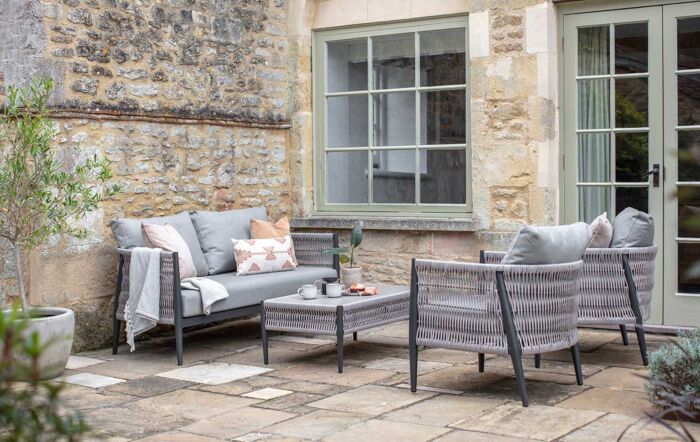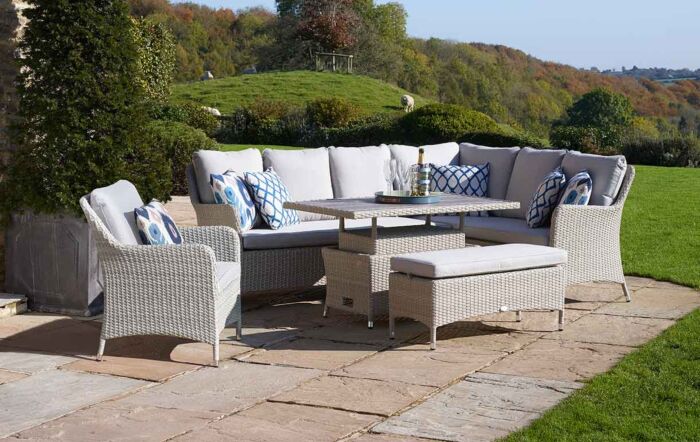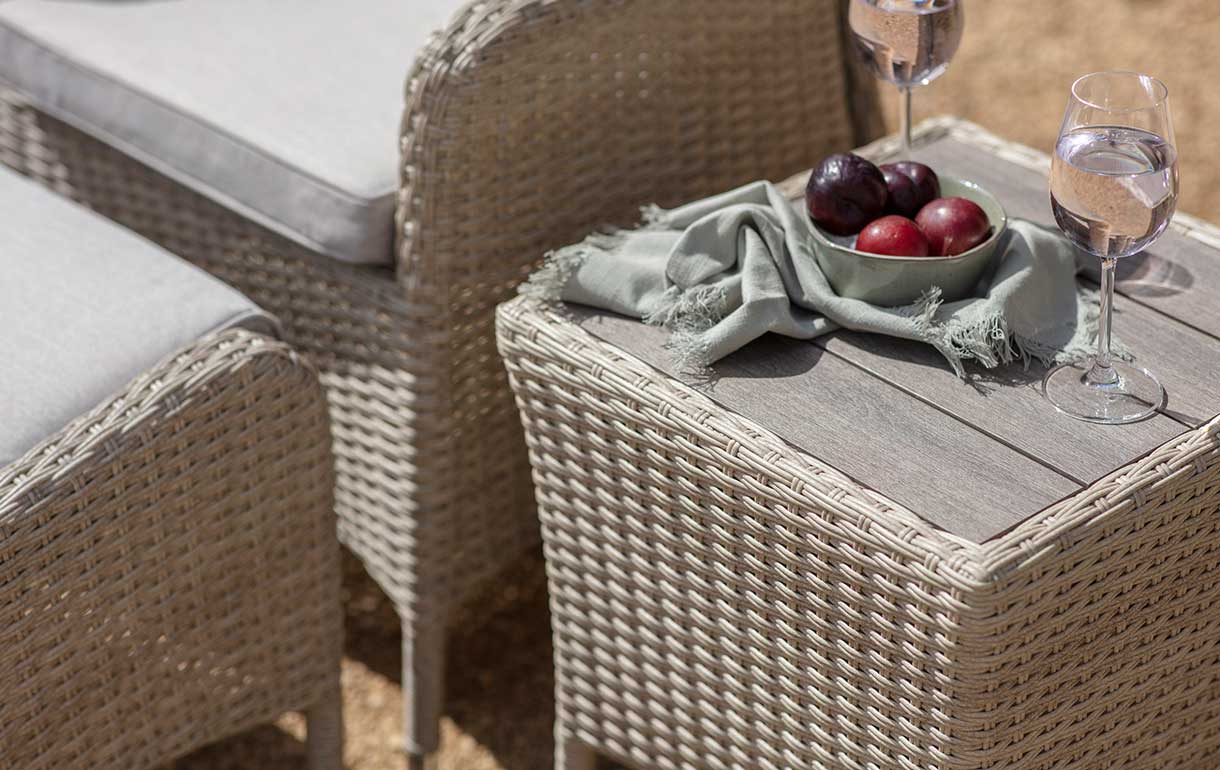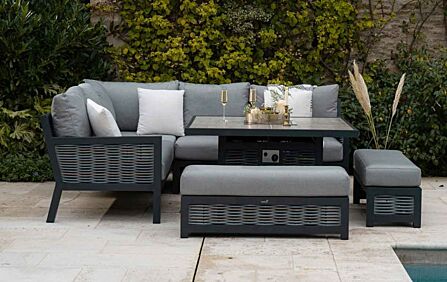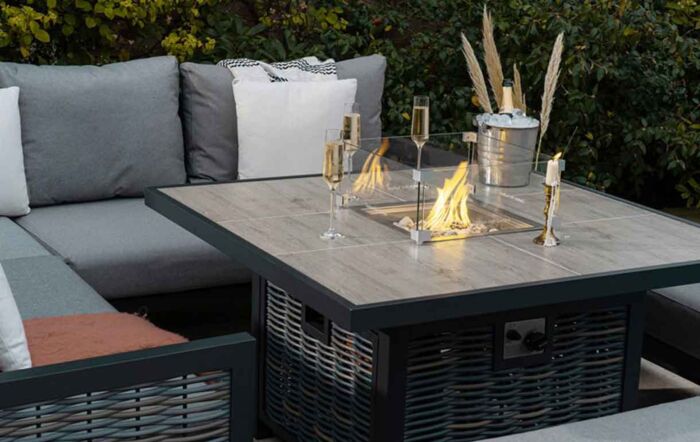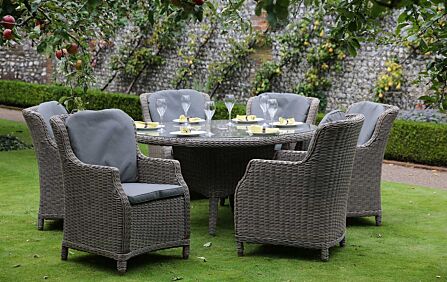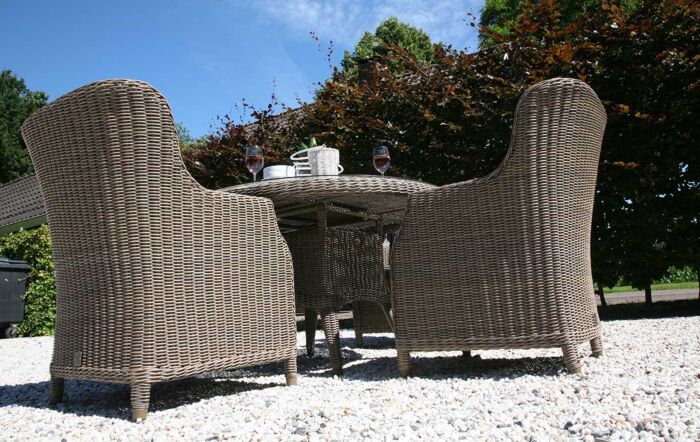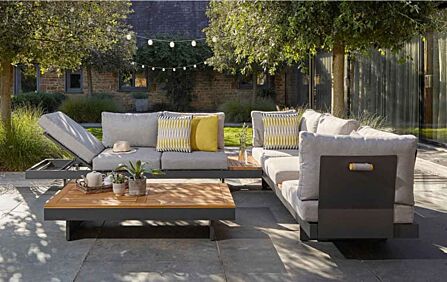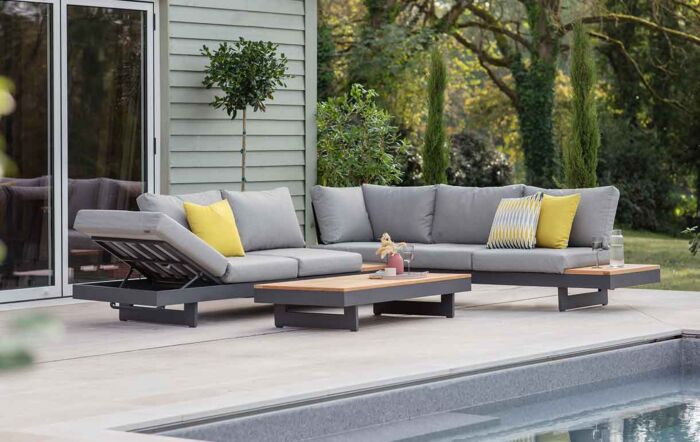What to do with Patio Furniture in Winter
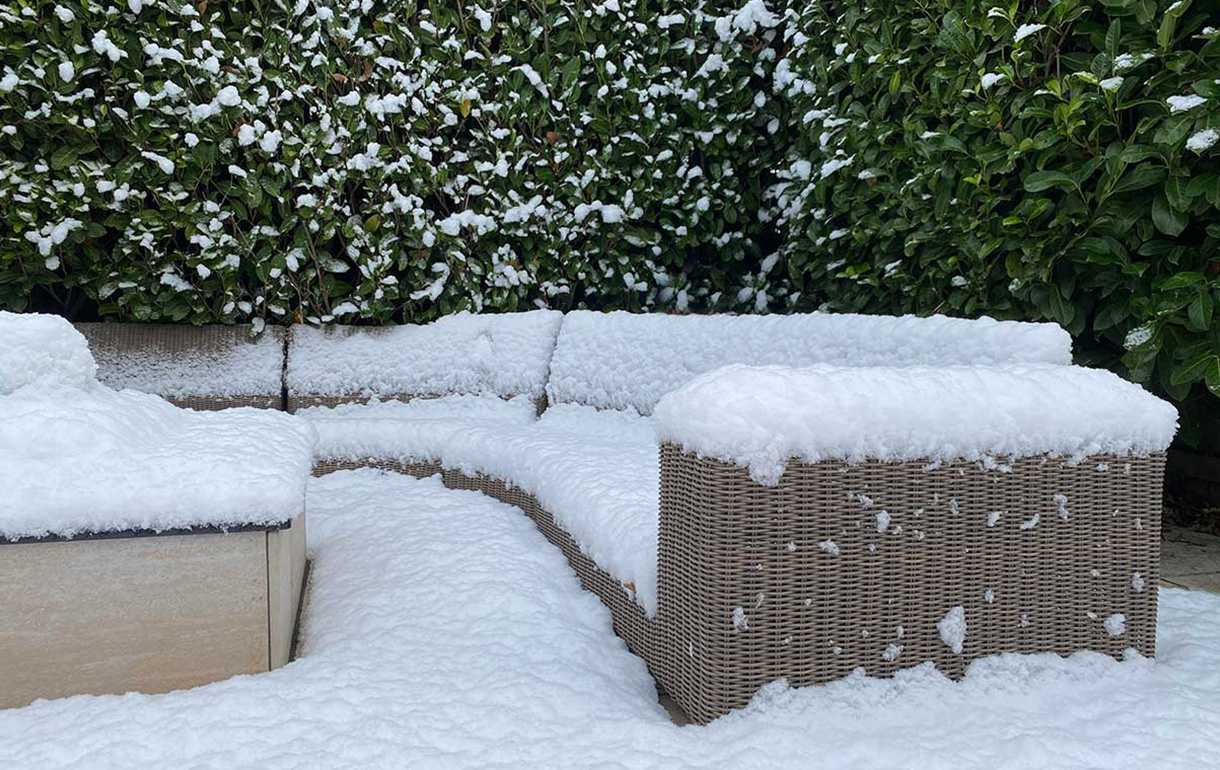
What to do with patio furniture in winter
Looking after your patio furniture will ensure it lasts for many years to come. During winter, you probably don’t use your garden furniture very often. Therefore, it’s vital that you properly protect it over those cold and icy winter months, ready for the sunny days of summer.
We all want our outdoor furniture to look like new year round, so we’ve put together some tips to help you achieve that.
There are so many questions surrounding this topic such as, can I leave my cushions outside during winter? Or should I cover my patio furniture every night? Here, we’ll take a closer look at some of the ways you can protect your patio furniture from the winter weather and all the troubles it can bring.
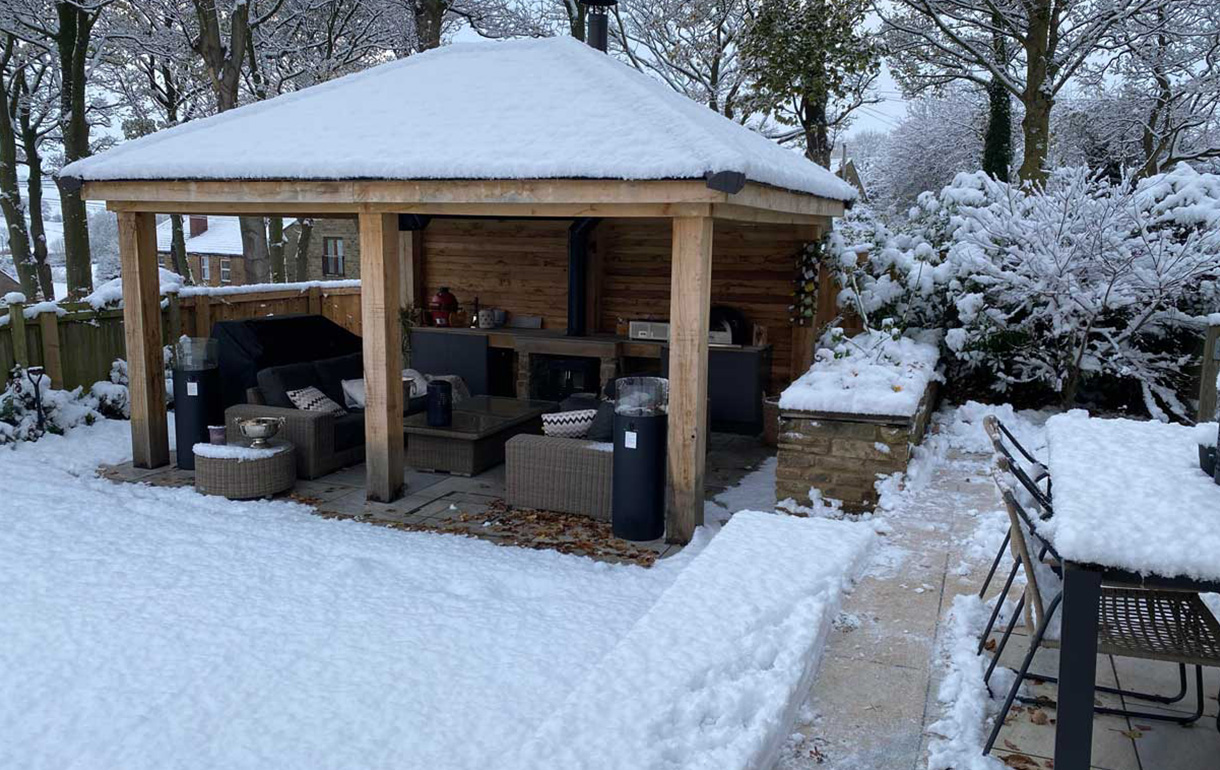
Can patio furniture be left outside in the winter?
Yes, you can leave your furniture outside for the winter, patio furniture is designed for just that! There are many different types of patio furniture such as rattan furniture, aluminium furniture, wooden furniture and more.
For many of us, it is essential that our patio furniture needs next to no maintenance, we all want something that is easy to take care of! After all, our gardens are a place for quiet relaxation and socialising with friends and family, we don't want to be worrying about whether our patio garden set is going to fall apart or leave rust spots on our clothes.
What type of patio furniture is the most weather resistant?
Different types of outdoor furniture can sometimes require different types of treatment when it comes to cold weather and protection against freezing temperatures.
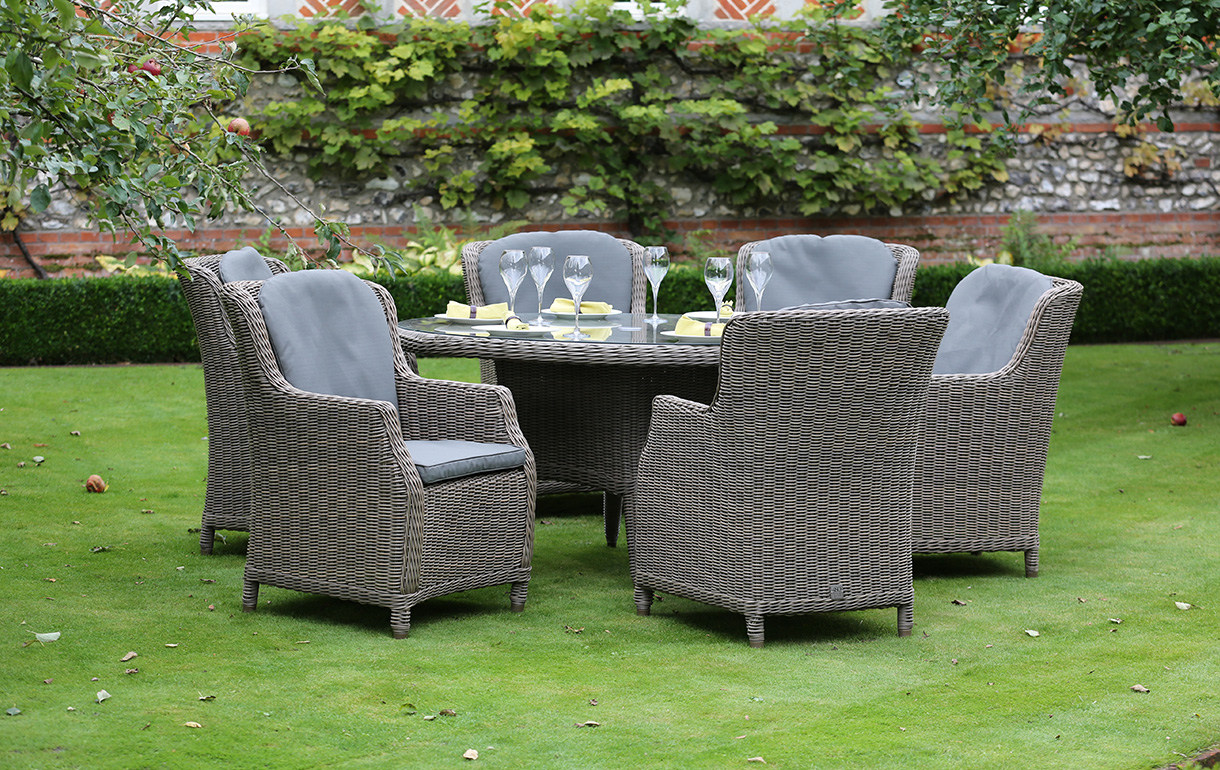
Rattan Patio Furniture
Rattan furniture has been a popular choice for many years, one of the reasons for its popularity is that it is extremely durable.
Made from a UV and frost-resistant polyurethane, rattan garden furniture is specifically designed to stay outside. So there's no need to worry about finding a place to store your big rattan corner sofa over winter! Some might say it's plastic furniture, and it is to some degree, but to us, plastic furniture is something else entirely.
Designed to replicate natural wicker furniture styles, the man made element of PU rattan patio furniture and its low maintenance is what, in our experience, gives it the edge over other materials when it comes to weather resistance.
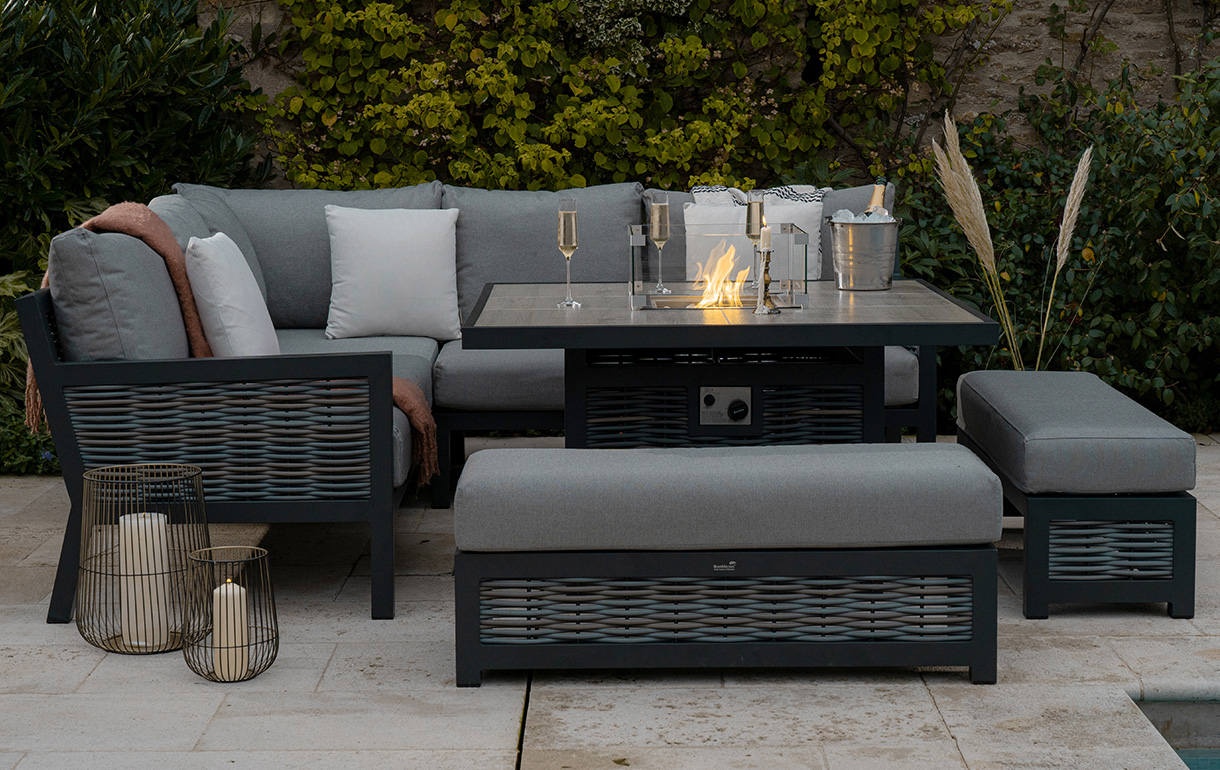
Metal Patio Furniture
Aluminium is used in garden furniture in a number of different ways - from table legs and sofa arms in rattan furniture, to powder-coated aluminium dining tables and chairs for a sleek modern look.
Aluminium is a popular material as it is naturally corrosion-resistant, extremely durable yet lightweight - this means you can leave it outside in the bad weather and it's unlikely to rust.
Metal garden furniture generally is a popular choice. Though on the slightly more expensive side compared to aluminium, garden furniture such as wrought iron bistro sets and benches are by nature designed to last a long time, but do need a little more maintenance.
The great thing about wrought iron is that it can be painted, so it affords you the opportunity to really change up the colour of your outdoor furniture if you wish to. It is however not rust-resistant, so it's important to keep it clean and repair any paint damage to prevent any moisture ingress.
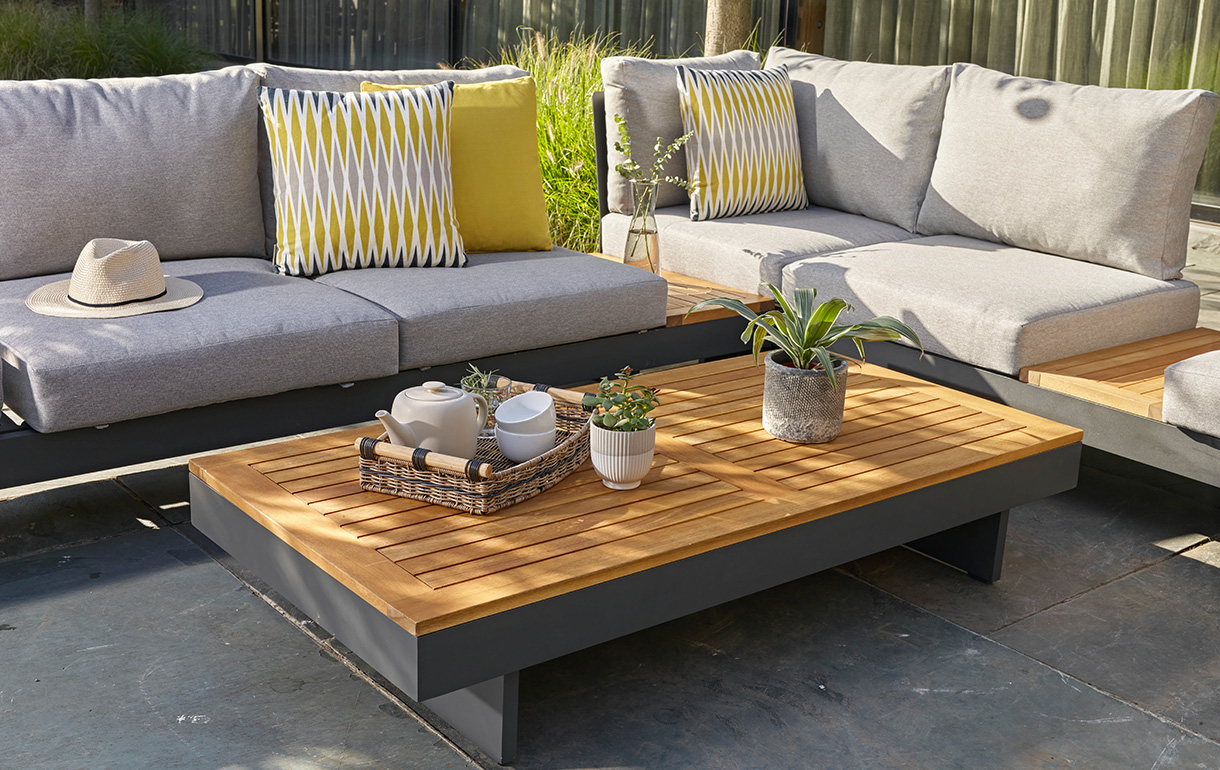
Wooden Patio Furniture
Wooden garden furniture such as garden benches and wooden dining tables have long been a popular choice.
Wood is an extremely durable natural material that can be left outside throughout the year but it is important to treat the wood if you want to maintain the colour otherwise it will change and weaken over time.
Teak is often favoured in wood furniture as it's naturally moisture resistant and malleable due to its cellular structure, meaning it's less likely to crack or split in the same way oak might.
Teak is a tropical hardwood and not easily grown outside of its native southeast Asia. This is why you'll often find teak patio furniture comes with a higher price tag than oak and pine furniture, but in the long term it's likely to last a lot longer if taken care of.
Top tip: If you’re using a patio furniture cover, make sure you remove it at least once a week to let the wood furniture breathe.
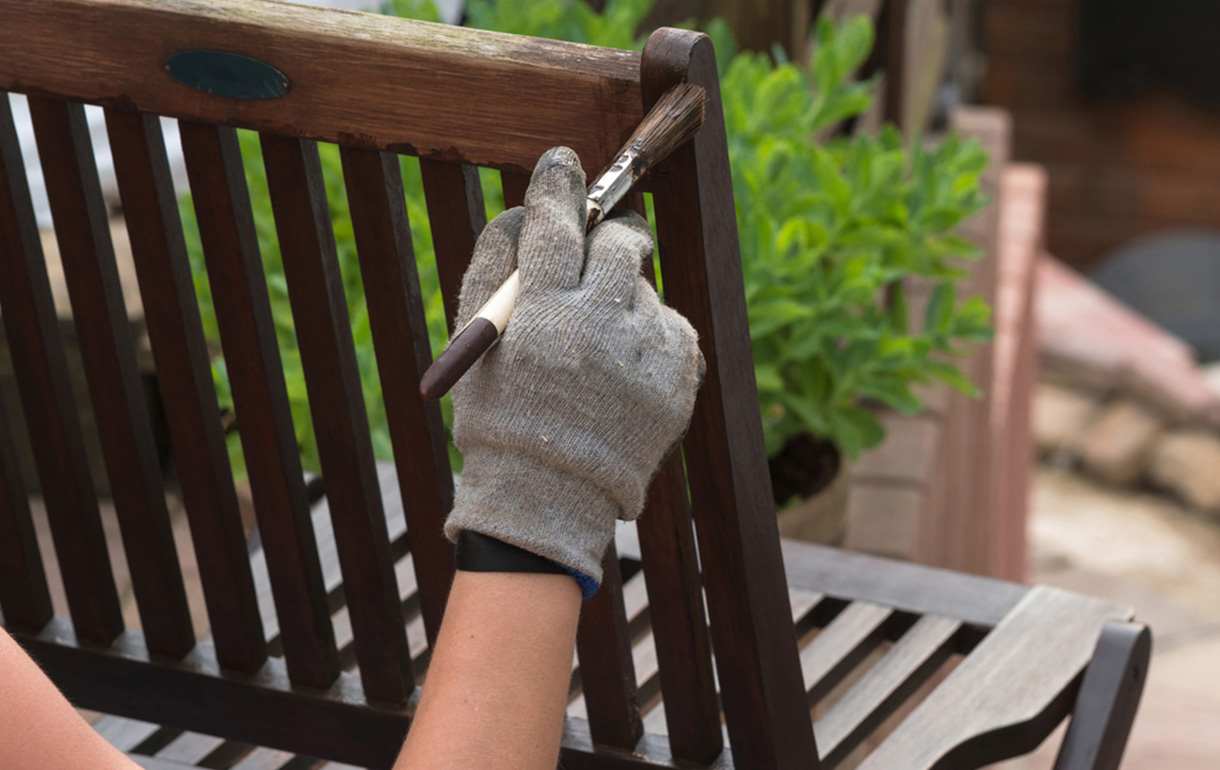
Plastic Patio Furniture
When considering plastic furniture (not PU rattan as that's made differently), it's usually a very budget friendly option as it's the cheapest to produce and maintenance is minimal. It can also be a great option for those with a small garden as it's often designed and is light enough to stack.
Unfortunately, this is the one that should be stored indoors if possible as freezing weather can have a negative impact.
More often than not, plastic furniture is made from either a single or multiple pieces of moulded or extruded plastic, these pieces will expand with the cold weather and then shrink as the temperatures warm.
This expansion can cause warping and weaken the structure, which can cause it to become brittle and break under pressure. Due to this, it's probably the one with the smallest lifespan, it's also unlikely to be repairable in the same way other materials are.
How to Protect Patio Furniture During Winter
There are a few different options when it comes to looking after your patio furniture during winter. We would always recommend that you use a garden furniture cover to protect your outdoor furniture. This is the best and easiest way to protect your furniture from any bad weather, fallen leaves and annoying bird droppings!
If you decide not to opt for a cover, if you're able to, store your outdoor furniture somewhere dry and secure. If you're not able to keep it away from the elements, be sure to at least remove any cushions to prevent mildew growth.
If you plan to leave your furniture frames outside during winter, we always recommend keeping it clean with a mild detergent and a mildly abrasive sponge. It's also important to remove any rotting leaves and those pesky bird droppings - the acidity of which will eat through any protective coatings on the furniture if left.

Covering
Using a garden furniture cover is the best way to ensure that your furniture is well protected against any freezing rain and frost. They add an extra layer of protection to your furniture over those icy winter months and prevent direct contact from the elements.
Outdoor furniture covers are extremely tough and have been cleverly created with every situation in mind. For added protection from wind, snow, rain and more - covers are also a great way to protect your patio furniture from sun damage, which can be surprisingly fierce in the winter months. Using a cover means that in spring, when it is time to use your furniture again, it will be clean and ready to use straight away.
Storing
Whilst it isn't necessary to store your furniture away for winter, it does give you some additional peace of mind if you're able to. If you have the storage space then great, you can store your patio furniture for winter.
If not, there are a couple of things you can do to help with the "wintering":
• First, stand your furniture on bricks, this will prevent it from sitting in any icy rain water that might gather. This is particularly good for wood furniture.
• If possible, move your furniture to a part of your garden that's out of the wind, this will help reduce any direct hits from falling leaves and icy rain/snow build up.
• Before the cold weather sets in, prepare outdoor furniture for the winter with a thorough clean and remove dirt build up. Applying a new coat of paint or stain at this point for extra protection will also be beneficial.
The two most popular indoor storage choices are either a garage or a shed. If you need to stack your patio furniture to fit it in, use cardboard to separate the pieces to prevent damage.
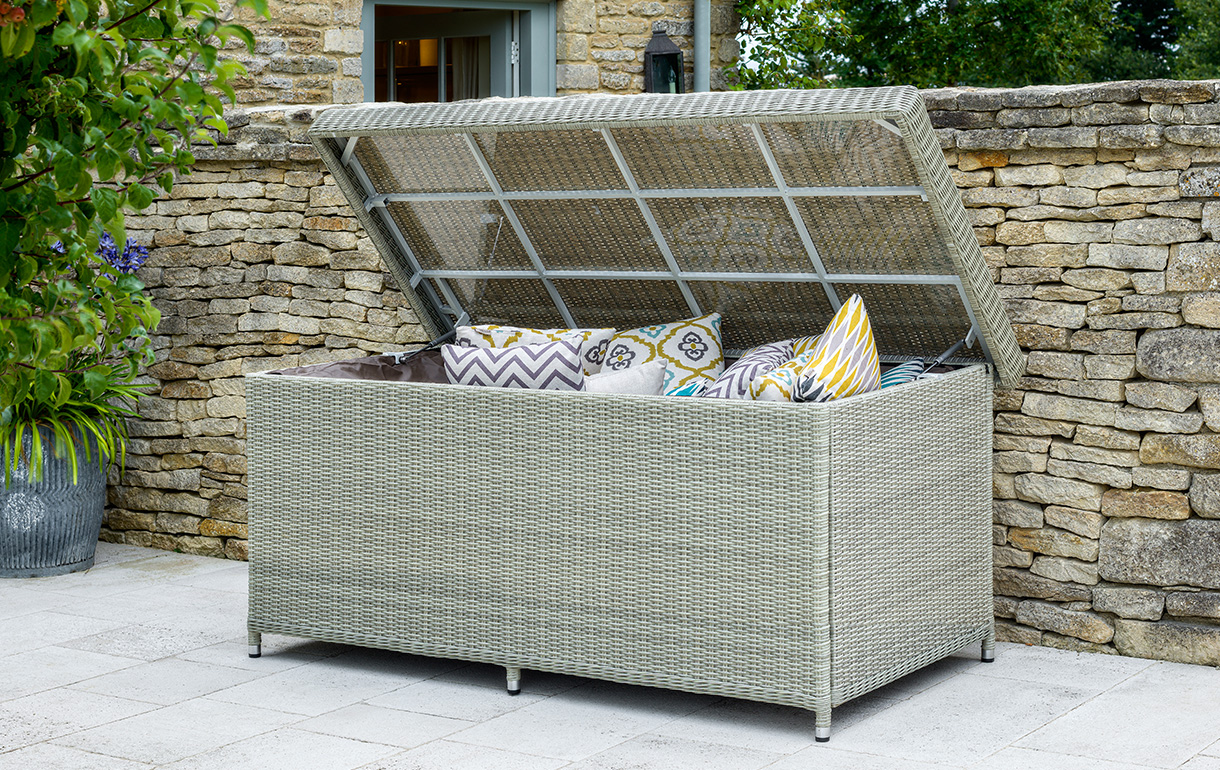
How to Store Outdoor Cushions in Winter
Knowing how to store your patio furniture cushions will ensure that they look their best for longer.
One of the most important pieces of advice we can give you is to always bring your outdoor cushions inside, don't be tempted to leave them outside without protection. It is true that outdoor cushions are tougher than indoor cushions, but this doesn't mean they're able to cope with the cold temperatures as easily as the frames will.
You should always clean your cushions ready for winter storage, that way when you get them out in spring they’ll be as fresh as the day you stored them away! During summer, your cushions might have gotten a little dirty, but not to worry! While many will come with their own care instructions, cleaning outdoor fabrics is pretty straightforward:
• First, you should brush off any dirt build up or dust using a soft brush.
• Next, use a mild soap with warm water and a soft cloth to clean the cushion covers. We recommend dabbing rather than rubbing any stains or spots, doing so could damage the fabric.
• We don't recommend machine washing as many outdoor cushions have a water-resistant coating and machine washing will likely remove the coating over time. This will allow moisture to get through to the cushion inner and increase the chances of mold and mildew forming.
• Before storing away, ensure the covers are completely dry. Use the remains of the warm weather to do this or keep them indoors for a period before storing, this will help prevent mold once packed away. The last thing you want to find when the sun returns is that your fitted covers need to be replaced because of mold and mildew!
The hardest part of looking after your cushions is choosing the best place to store them for a long period of time. Always think, is this place secure and dry? Many people choose to store their cushions in sheds or garages, we advise that you always keep them off the ground if you can. This is because the ground can hold moisture, which will damage your cushions.
Alternatively, you could opt for a storage box or a cushion bag. These are two easy options are specifically designed to help keep them clean and protected from any inclement weather.
You can also check out our handy guide on how to store your outdoor cushions in winter for more useful tips on how to winterproof your garden furniture.
Patio Furniture Storage Tips
We hope you've found our patio furniture winter storage tips helpful, if however you'd like further advice on how to store garden furniture, don't hesitate to get in touch with our friendly, knowledgeable team!
Further Reading:
About the Author

Chloe Shaw is a Garden Furniture & Conservatory Furniture Specialist with many years of experience working at JB Furniture. Chloe combines her deep knowledge of garden furniture trends with her talent for creating engaging and informative content. She loves sharing inspiration, design tips, and product insights to help readers transform their gardens and conservatories into beautiful and inviting retreats.








